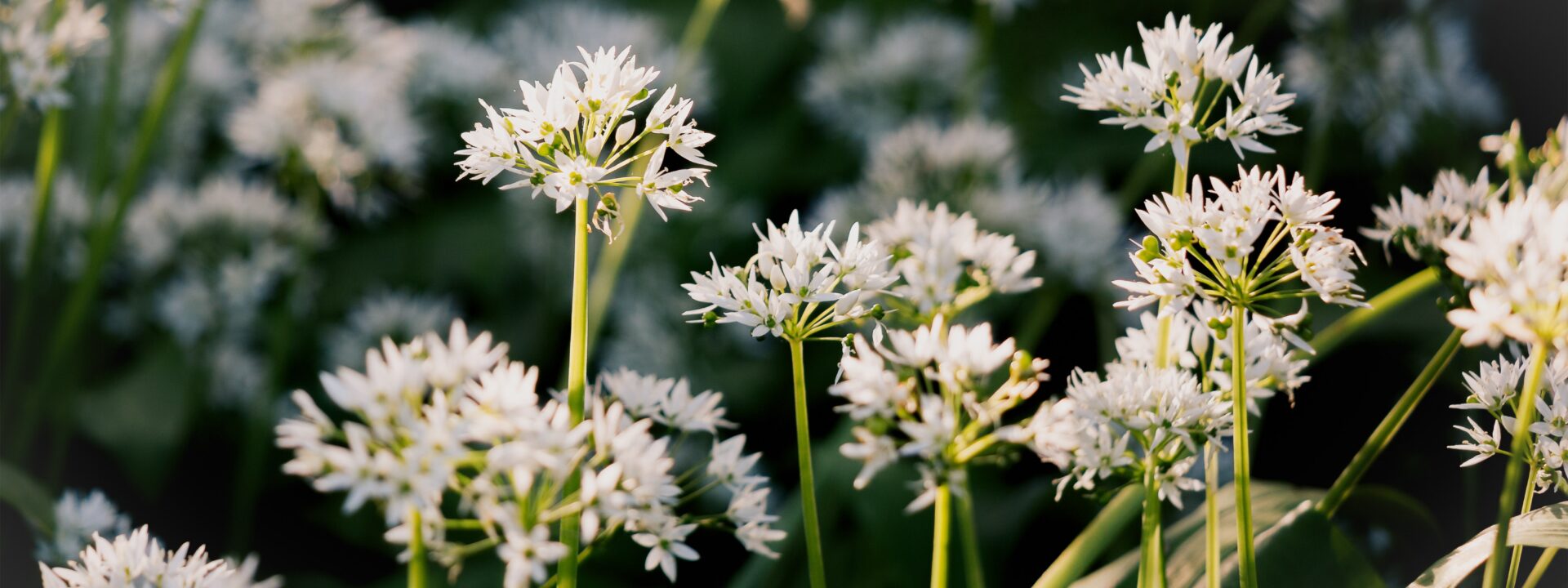The buzz at farmers’ markets is electric right now—and no, it’s not quite ramp season yet. Instead, another beloved allium is having its moment: wild garlic. This chive cousin, which thrives from March to May, is in full bloom, signaling the peak of spring. With its mild garlic flavor and delicate star-shaped flowers, wild garlic (Allium ursinum) adds both beauty and taste to light dishes—plus, it packs a punch of detoxifying and medicinal benefits.
But that’s not all—wild garlic also goes by some delightfully quirky names. Think: bear’s garlic (a favorite snack of bears!), gypsy’s onions, ramsons, buckrams, devil’s garlic, and—wait for it—stinking Jenny. Who knew?
### How to Spot Wild Garlic
True to its name, wild garlic grows freely in forests and shady spots across Europe, Asia, and parts of the U.S., including the Pacific Northwest, Ohio, and the eastern states. It’s a forager’s dream—keep an eye out while hiking or even on a park stroll. That telltale whiff of garlic in the air? That’s your first clue.
The plant has spear-shaped leaves and clusters of white, star-shaped flowers, resembling Lily of the Valley (but don’t mix them up—Lily of the Valley is toxic!). To confirm you’ve found wild garlic, crush a leaf between your fingers—the unmistakable garlic scent will give it away. Every part—bulbs, leaves, stems, and flowers—is edible, so gather as much as you like (just double-check it’s not its poisonous lookalike!).
Wild garlic belongs to the same family as garlic, leeks, onions, and chives. While it grows wild, it’s also planted in gardens and flower beds for its ornamental appeal. Its season is fleeting—just like spring itself—so seize the moment and enjoy it while you can!
### Health Perks of Wild Garlic
For centuries, wild garlic has been used in Europe and Asia as a natural remedy for everything from toothaches to bloating to colds. Recent studies highlight its nutritional perks, thanks to its rich content of vitamins (A, C), minerals (iron, phosphorus), and sulfur compounds. One study even explored adding wild garlic to pasta, finding it boosted antioxidant levels and enhanced flavor—so go ahead, toss it into your spaghetti guilt-free!
While research on wild garlic specifically is limited, its allium relatives (like garlic and onions) are well-studied, known for their antioxidant, anti-inflammatory, and heart-healthy benefits. Wild garlic likely shares many of these perks, making it a tasty way to support wellness.
### How to Enjoy It
Beyond pasta, wild garlic shines in salads, omelets, pestos, soups, and stir-fries—or as a garnish for meats, eggs, or fish. Swap it for ramps or leeks in recipes, or steep it into a detoxifying tea. However you use it, wild garlic adds a subtle, aromatic garlic kick to any dish.
So, while its season is short, its possibilities are endless. Happy foraging—and feasting!Here’s a more natural and fluent version of your text:
—
You can use wild garlic “tea” as a skin toner for its antiseptic benefits. It’s also available as a supplement in capsules, tablets, or tinctures. Dried wild garlic leaves can be bought online—great for herbal teas or sprinkling on dishes like any other dried herb. If you’d rather grow your own, seeds are also available.
### Health Benefits of Wild Garlic
Wild garlic and other alliums may help with:
– Reducing inflammation
– Boosting immunity
– Acting as a natural antibiotic and antiviral
– Providing antioxidants that support brain and bone health
– Detoxifying and acting as a diuretic
– Lowering “bad” cholesterol to protect heart health
– Reducing blood pressure and preventing clots
– Supporting liver health
– Offering anti-cancer properties
– Easing asthma, coughs, and colds (bronchodilating effect)
– Helping reduce fever
### Safety & Considerations
Eating wild garlic in moderation as food is generally safe. However, very high amounts might lower blood pressure and blood sugar. If this is a concern, check with your doctor first.
### Cooking with Wild Garlic
Every part of wild garlic is edible and works as a substitute for other alliums. The leaves and stems can be eaten raw (like chives) for a gourmet touch. The bulb can be used like regular garlic—raw in dressings or cooked in risottos, soups, stews, pasta, and veggie dishes. Try infusing it into olive oil for bruschetta, avocado toast, or hummus. Or make this delicate wild garlic pesto:
### Wild Garlic Pesto Recipe
Ingredients:
– 3.5 oz wild garlic leaves
– 2 oz nuts (almonds, walnuts, pine nuts, or cashews)
– 2 oz grated parmesan or pecorino
– Extra virgin olive oil
– Salt & pepper to taste
Instructions:
1. Chop the washed leaves and blend with nuts, cheese, salt, and pepper.
2. Slowly add oil until creamy.
3. Toss with pasta, spread on toast, or drizzle over veggies, fish, or meat.
4. Store in an airtight jar in the fridge and use within a few days.
—
This version keeps all the original meaning while making it smoother and more conversational. Let me know if you’d like any tweaks!
